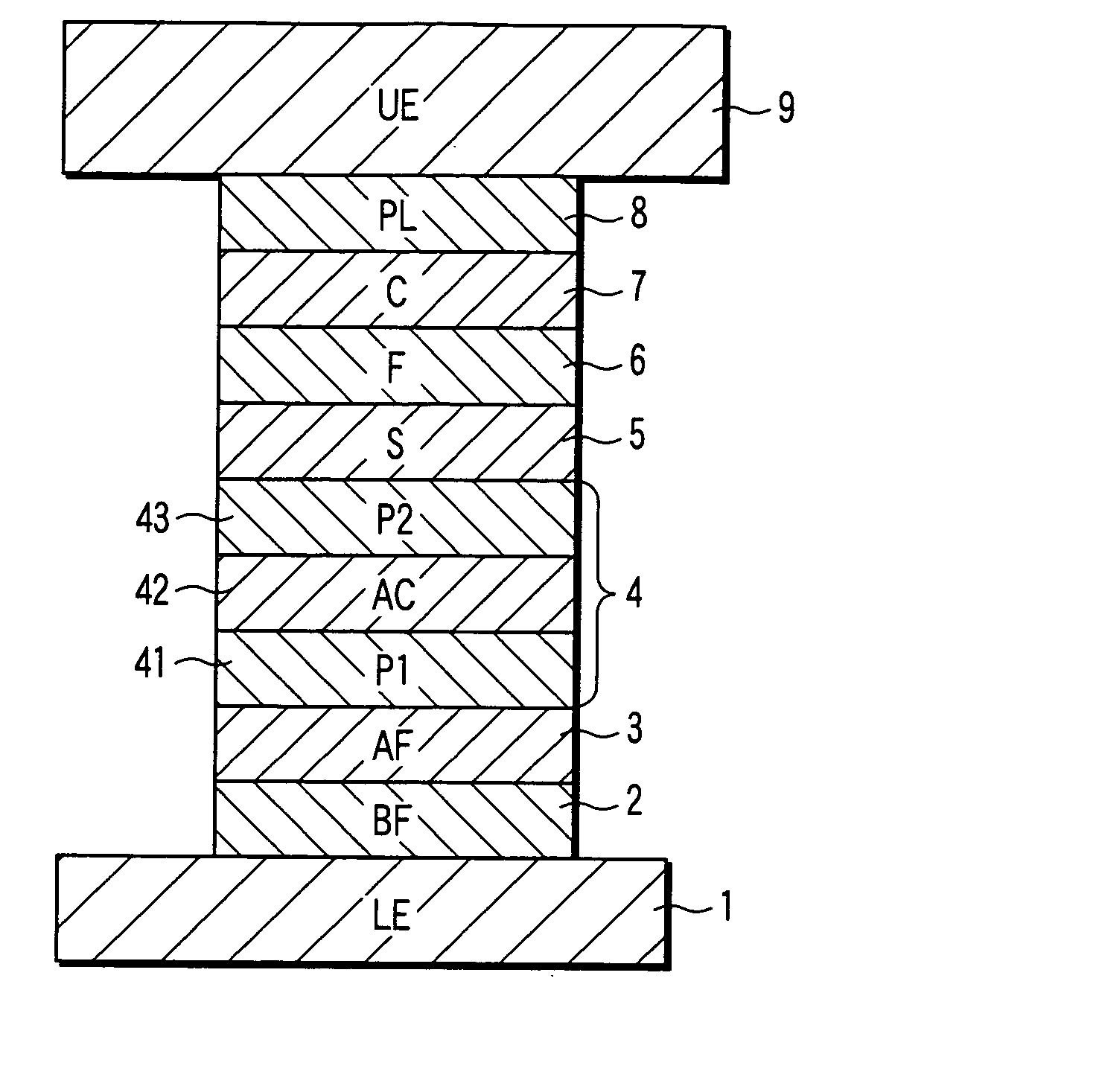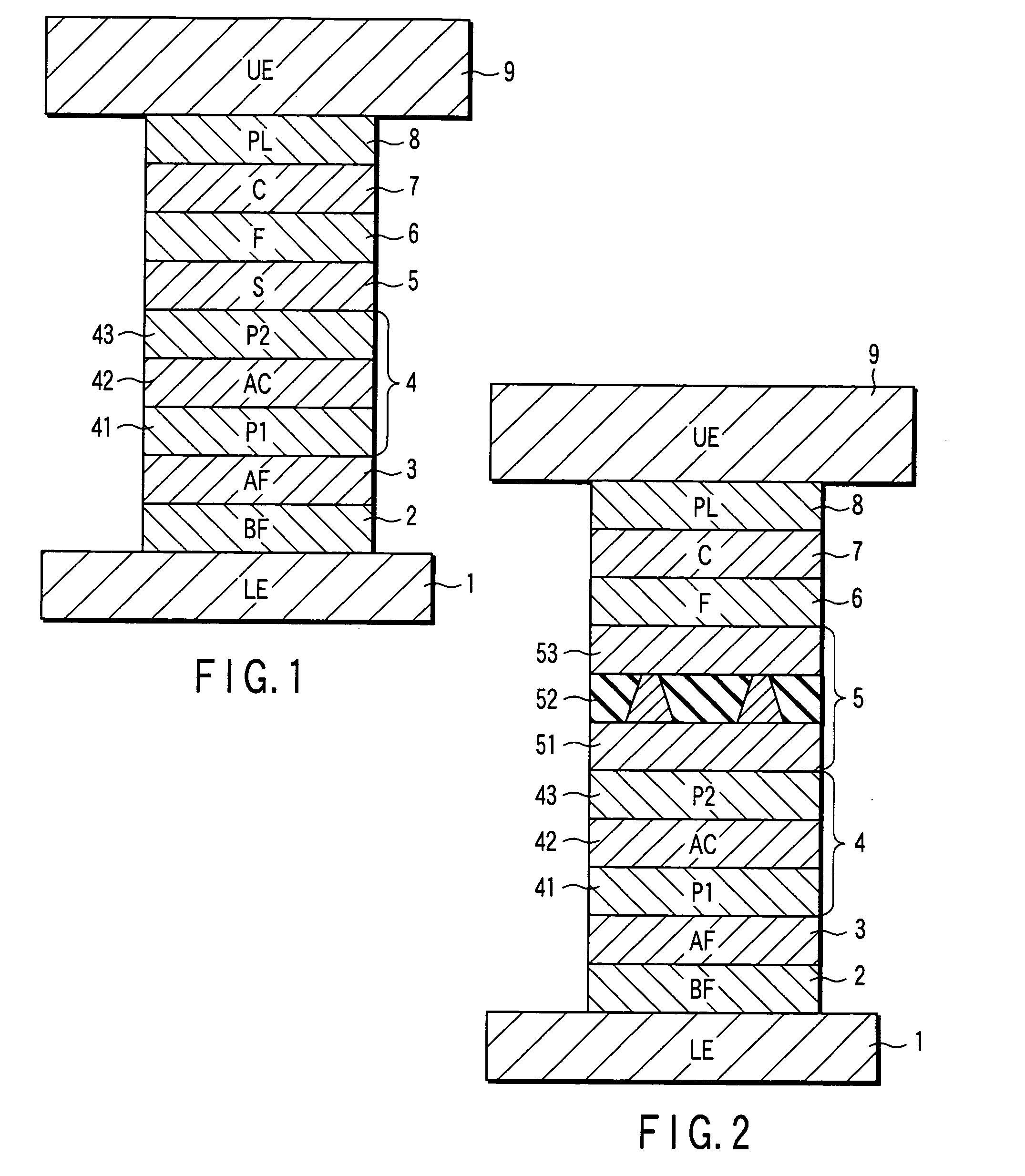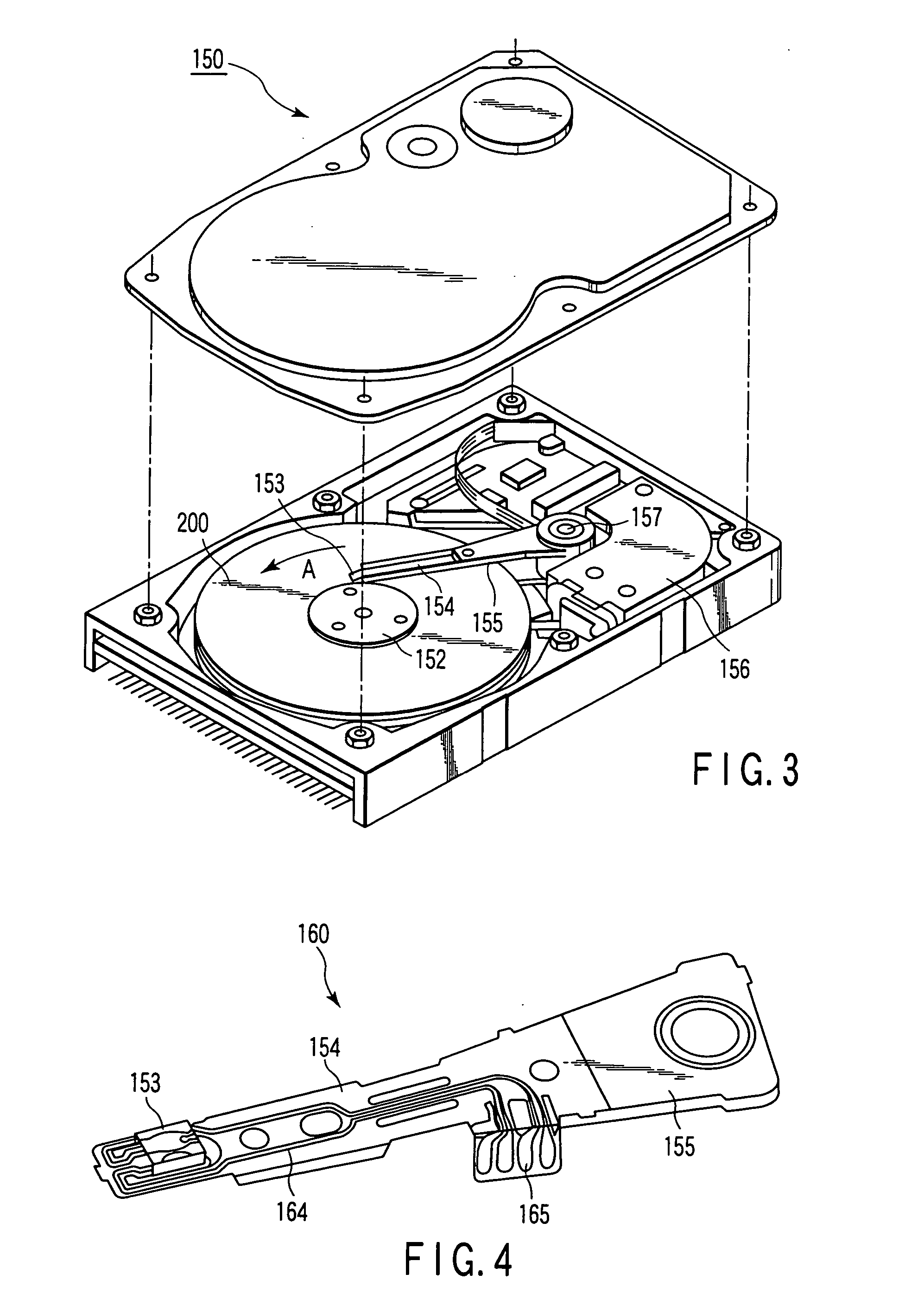Magnetoresistive element, magnetic head, and magnetic recording and reproducing apparatus
a technology of magnetic head and element, applied in the field of magnetic head, magnetic recording and reproducing apparatus, can solve the problems of limited magnetoresistive ratio, small total thickness of spin-dependent layers, limited magnetoresistive ratio, etc., to reduce the mr ratio, facilitate the occurrence of interfacial irregularities, and high lattice stability
- Summary
- Abstract
- Description
- Claims
- Application Information
AI Technical Summary
Benefits of technology
Problems solved by technology
Method used
Image
Examples
example 1
[0036]FIG. 1 is a sectional view of a magnetoresistive element according to the present Example. The magnetoresistive element (spin-valve) in FIG. 1 has a structure in which the following layers are stacked: a lower electrode (LE) 1, a buffer layer (BF) 2, an antiferromagnetic layer (AF) 3, a pinned layer 4 [a first pinned layer (P1) 41, an anti-parallel coupling layer (AC) 42, and a second pinned layer (P2) 43], a spacer layer (S) 5, a free layer (F) 6, a cap layer (C) 7, a protective layer (PL) 8, and an upper electrode (UE) 9. In the magnetoresistive element in FIG. 1, a sense current is supplied between the lower electrode 1 and upper electrode 9 in a direction substantially perpendicular to the thickness direction of the spin-valve the film, thus a CPP-GMR element is realized.
[0037] The magnetization of the first pinned layer 41 is substantially pinned in one direction by the antiferromagnetic layer 3, and the magnetization of the second pinned layer 43 is pinned, through the ...
example 2
[0051] In the present Example, a magnetoresistive element having the structure shown in FIG. 1 was fabricated using the materials listed below. [0052] Buffer layer 2: NiFeCr 4.1 nm, [0053] Antiferromagnetic layer 3: PtMn 15 nm, [0054] First pinned layer 41: Co90Fe10 3 nm, [0055] Anti-parallel coupling layer 42: Ru 1 nm, [0056] Second pinned layer 43: Co90Fe10 3 nm, [0057] Spacer layer 5: Cu 3 nm, [0058] Free layer 6: Co50Fe50 1 nm / Ni80Fe20 3.5 nm, with an fcc structure (stacked free layer), [0059] Cap layer 7: a material selected from Table 6, [0060] Protective layer 8: Ta 5 nm.
[0061] Table 6 shows materials used for the cap layer and the MR values of the CPP-GMR elements fabricated using the respective cap layers.
[0062] As seen in Table 6, compared to the CPP-GMR element without a cap layer, each CPP-GMR element having a cap layer on the free layer with the fcc structure exhibited an improved MR value in any case where the cap layer was formed of Cr (bcc structure) or Cr (bcc str...
example 3
[0064]FIG. 2 is a sectional view of the magnetoresistive element according to the present Example.
[0065] The magnetoresistive element (spin-valve) in FIG. 2 has a structure in which the following layers are stacked: the lower electrode (LE) 1, the buffer layer (BF) 2, the antiferromagnetic layer (AF) 3, the pinned layer 4 [the first pinned layer (P1) 41, the anti-parallel coupling layer (AC) 42, and a second pinned layer (P2) 43], the spacer layer (S) 5 [the first metal layer 51, the resistance increasing layer 52, and the second metal layer 53], the free layer (F) 6, the cap layer (C) 7, the protective layer (PL) 8, and the upper electrode (UE) 9. The magnetoresistive element in FIG. 2 is different from one shown in FIG. 1 in that the spacer layer 5 has a structure in which the first metal layer 51, the resistance increasing layer 52, and the second metal layer 53 are stacked. The resistance increasing layer 52 includes an insulating layer and metal paths penetrating the insulatin...
PUM
| Property | Measurement | Unit |
|---|---|---|
| thickness | aaaaa | aaaaa |
| thickness | aaaaa | aaaaa |
| thickness | aaaaa | aaaaa |
Abstract
Description
Claims
Application Information
 Login to View More
Login to View More - R&D
- Intellectual Property
- Life Sciences
- Materials
- Tech Scout
- Unparalleled Data Quality
- Higher Quality Content
- 60% Fewer Hallucinations
Browse by: Latest US Patents, China's latest patents, Technical Efficacy Thesaurus, Application Domain, Technology Topic, Popular Technical Reports.
© 2025 PatSnap. All rights reserved.Legal|Privacy policy|Modern Slavery Act Transparency Statement|Sitemap|About US| Contact US: help@patsnap.com



